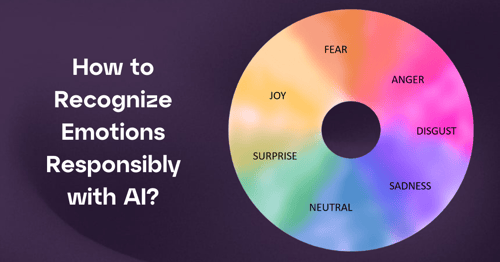How to improve customer experience with AI
It stands to reason that the usage of personalised customer data is one of the key ingredients for building better customer experiences. Quite a bit has been written about creating “intelligent experiences” in recent years, and with the increasing capabilities of AI-based data processing routines, there are quite high hopes that the use of this sophisticated technology will foster better, more engaging experiences.
A recent article in the Harvard Business Review from March 2022 (here) has outlined the task that lies ahead of us, emphasising the importance of the interplay of the domains involved, including AI: “This is not just an exercise in customer journey mapping or technology planning. It is about developing the front-end-flow to the customer and the back-end fuel to drive intelligent experience engines.“
The article as well gives an account of the importance of creating end-to-end experiences. The authors write: “To fulfil every single goal the customer may have for an end-to-end experience, companies must think through how to design the flow of a given moment, the information needed to support it, and the cross-channel or cross-party connections required to successfully complete the interaction.“ (ebda, highlighting done by me)
In other words: we need to build systems that can equip actions with impact and meaning, and that can generate patterns that can be used for deriving insights by other systems.
This, for sure, is quite an abstract concept. So let me outline the thinking behind this using a set of cornerstones.
1. Focus on micro goals
While every business must be interested in getting their baseline right, an aggregated view on single customer actions is no longer helpful. If your company is the creator of a helpful SaaS solution for managing staff in mid-sized enterprises and all your website has to offer to prospects is to book a live demo, you will get a few bookings for the demo, but from the vast majority of website visits you will get precisely: nothing. It is no longer about how clever your solution is, it is about how relatable and understandable it is for your customers.
Now imagine an HR Director evaluating a range of SaaS products for this purpose. Before being ready to book a live demo, a couple of other open issues need to be covered: Is this a trustworthy supplier? Can we get support for the service during our normal business hours? Are there any costs incurred beyond the monthly fee per each user?
It is not so much the HR Director’s own scrutiny patterns that matter here, but the fact that an HR Director has to make decisions and suggestions that are transparent and considered reasonable from the perspective of other corporate functions. What would the CIO want to know about the solution? How can pre-existing privacy and security guidelines be implemented, ensured, and properly monitored? How do internal IT systems and HR databases feed into the solution at hand? And how can data patterns generated with this brilliant new solution be extracted and fed into the customers' own systems to create benefits? And (as the CFO may ask): at what cost?
2. Getting personalisation right
While it is easily conceivable that specific corporate functions have largely diverse interests (CFOs and CIOs have different demands), we need to look at how well any novelty systems are suitable for different maturity levels of organisations. The degree of readiness for employing automated decision making varies largely across and within industries, but if a certain degree of formalisation is the up-front requirement for taking a system into use, its chance of being adapted within an immature organisation is small.
Offering transitional help with creating the needed organisational standards is an individualised service that many companies can potentially benefit from. It is important that the SaaS vendor’s business model supports the transition of their client organisations, but many companies still focus on their own products first, and expect a product-customer match to be achieved organically, and right from the get-go.
3. Fulfill within the customers' domain
No matter how well an offering is defined from a technical or organisational perspective: if a customer organisation can’t derive value from an offered solution as the organisation doesn’t meet the needed degree of formality, the proposed solution is not likely to make it beyond the pilot implementation.
The cost of changing vendors or systems is comparably low when SaaS solutions are being employed, so it is paramount that any attempt on fulfilment no longer focuses on the amount of paid monthly seats (or: license fees), but employs a view of “value created for the client organisation”.
Most performance metrics are inside-out metrics. They cover which of our campaigns had the biggest ROI, which of our products sold best etc. Only rarely we see customer-value-based metrics at work here.
4. Overcome channel lock-in
Traditional ownership structures in organisations have not helped much with creating seamless experience canvases. When interactions and conversions are tied to specific channels (and, as Resmini noted: “the system’s awareness of ongoing activities is limited“), we see a lot of abandoned user actions with no understanding of their root causes, or the interplay of competing touchpoints. The systems we have built so far are focusing on transactional processes at large scale (a purchase, the booking of a live demo, or the creation of an online account), but performance is almost always looked at as channel performance. We need to change that to understand how meaning is generated and created on all different stages of customer interactions.
5. Look at the end-to-end experience, not at the conversion point
As seen in our initial example with the pizza restaurant (see part 1 of this series), a customer experience unfolds into a specific sequence of meaningful events over time. Customer’s motivations may shift along the path, and emerging customer needs (for determining and scrutinising choice options, or for reassurance) are structuring the experience path to a far greater extent than the set of happy path milestones our initial customer journey drawings often consist of.
But smooth customer progress is really only one side of the coin. The principle of flow entails so much more than reaching a goal without much effort. From a customer perspective, experience value is created from enabling meaningful situational choices, not in doing a “one-click purchase”.
Here is where AI may come to our help: Contrary to creating rigid rule-based systems, AI systems are operating mainly on the principles of probability. And these principles are really close to supporting event sequences that are directly addressing propensity for action, which is a genuine human trait. The next best action is a heuristic evaluation pattern.
With machine learning, we can let an AI classify texts and capture whole event sequences to determine actor interest around products and services prior to conversions. We should be able to gain a deeper understanding of the comfort factors that people apply before coming to conclusions. The user journeys we create based on those insights may be a bit more meandering than neoclassical economy would have us plan for - I guess a lot depends on whether we favour comfortable selections over quick decisions or not.
And here’s the caveat from the angle we explored over the course of this article series:
Despite appearances, utilising AI for improving customer experiences is not primarily a technical task. Of course: technology is involved to an extent, but there seem to be many more organisational challenges than technical challenges.
This at least is one of the surprising resumés that the recent article in the Harvard Business Review is drawing. The authors have derived what they call a “70/20/10 rule. They write: “Seventy percent of the effort of changing an organization—its processes, ways of working, key performance indicators, and incentives—involves people. Twenty percent entails getting the data right. The remaining 10% is about the technology foundation.“
If you are as surprised by this sorting as I was, it may help remembering that it is almost exclusively the emissaries of technology companies who are writing about the topic of Machine Learning and AI. Their angle makes a lot of sense: If your bread-and-butter job is to sell technology solutions for optimising business processes, the emphasis has to be on choosing the right technology (“Ours!”), and on getting the right data (datapoints to fuel our proposed technology solution). My contention is that the HBR authors may be right, and the whole topic of AI needs to be looked much more technology-agnostic than is actually happening. But it will require brave and courageous organisations to prove this thought holds water.
At least with all the interesting things being written about the large language model that ChatGPT uses, we see that the available technology is already mature enough to produce astonishing text outputs. Clever people have already mentioned that hallucinating AIs will soon be a thing of the past. But think about what ChatGPT has been created and designed to do: creating plausible-sounding text outputs, answering to a limited input prompt. The discussions on what AIs can and cannot do will soon shift towards what they should and should not do.
But for creating what is deemed “Intelligent Experience Engines” we will need to think much further. We need to think about how data is processed in one system and how these outputs are interpreted by another: “Especially with the rise of AI interactions we are getting real caught up in the surface appearance of creating meaning, and conversation and interaction, without thinking more deeply about the feedback loops.“ Erika Hall (@mulegirl) on Twitter, Jan 29, 2023).
For now, we seem to be largely content with letting ChatGPT create meeting agendas or pizza recipes in the form of a Shakespeare sonnet, but we haven’t yet looked underneath the hood, asking for how it may change the form of reasoning in academic and in business contexts.
Author

Michael Dlugosch
Senior Consultant
I am a strategist and designer with over 20 years of experience in the digital industry



